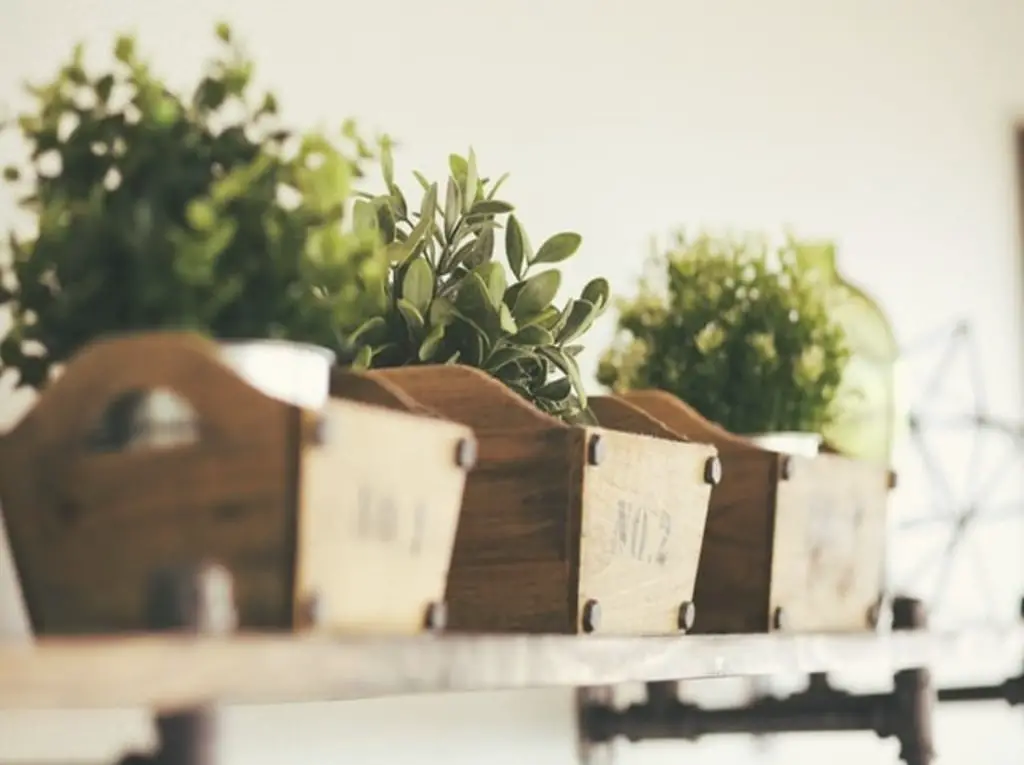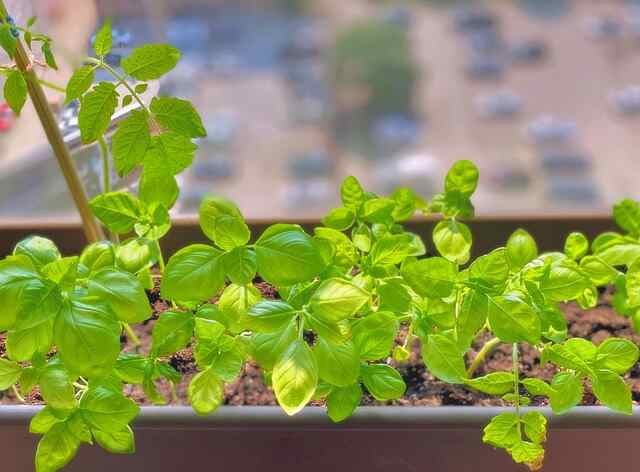How to Start a Herb Garden Indoors? (A Growers Guide)

Do you want to start growing your own food, but don’t have access to a garden? When it comes to home gardening, you don’t need a large plot of land or even a patch of grass. Herbs are one of the most popular plants to grow indoors, and even small spaces can accommodate a tidy herb garden.
Whether you’re looking for efficient urban gardening or just want to add a bit of flavor to your cooking, growing herbs indoors is an easy way to begin your journey as a gardener.
In this blog post, I’ll discuss all you need to know about growing and caring for your own indoor herb garden – from proper containers to light requirements, getting yourself organized, and tips on harvesting and preserving. Read on to find out more!
Table of Contents
- 1 How to Start a Herb Garden Indoors?
- 1.1 I. Introduction
- 1.2 II. Choosing the Right Herbs
- 1.3 III. Preparing Your Space
- 1.3.1 Types of containers and soil to use for indoor herb gardening
- 1.3.2 Lighting options for indoor herb gardening without sunlight
- 1.3.3 How to properly ventilate your indoor herb garden?
- 1.3.4 Indoor herb garden planters and windowsill options
- 1.3.5 Grow herbs using indoors herb kits & automatic garden systems
- 1.4 IV. Planting and Care
- 1.5 V. Harvesting and Using Your Herbs
- 1.6 Ideas for using your fresh herbs in cooking and home remedies
- 1.7 VI. Conclusion
- 2 Tools for an Indoor Herb Garden
- 3 Tips for Growing an Indoor Herb Garden
- 4 Author
How to Start a Herb Garden Indoors?
I. Introduction
Indoor herb gardening is an excellent way to bring fresh, flavorful herbs into your home. Growing your own herbs indoors has a variety of benefits, including the ability to enjoy homegrown herbs regardless of the season and without relying on sunlight for growth. Indoor herb gardening gives you easy access to fresh ingredients that can be used in many recipes or taken as supplements and teas.
Additionally, keeping herbs indoors allows you to control their environment and eliminates the risk of pests or diseases from outdoor garden environments. Finally, growing your own herbs indoors provides a great opportunity for bonding with family members or friends by teaching them how to care for their own indoor plants. With some basic knowledge and tools, anyone can become an accomplished indoor herb gardener!
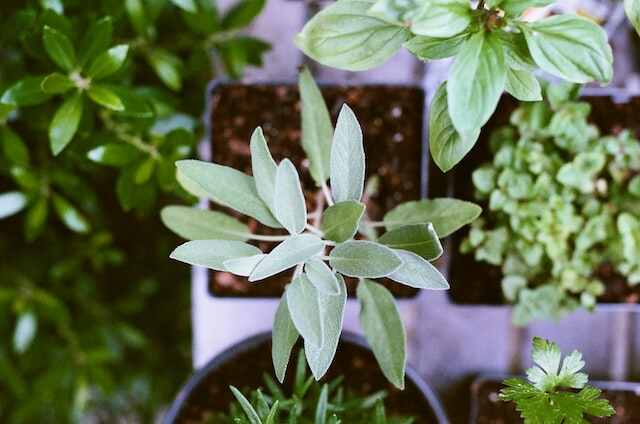
II. Choosing the Right Herbs
Types of herbs that are well-suited for indoor growing
Herbs that are well-suited for indoor growing and can grow without sunlight include chives, basil, sage, thyme, rosemary, oregano, mint, and parsley. All of these herbs are easy to care for indoors and require minimal attention.
They thrive in moist soil with indirect sunlight and do not need a lot of light to grow. Furthermore, they can be grown directly in pots or planters and will add a delicious flavor to your cooking while providing you with an inexpensive source of fresh herb’s year round.
Factors to consider when selecting herbs (light, humidity, temperature, etc.)
When selecting herbs for your indoor garden, there are several factors to consider. First and foremost is the light requirements of the particular herb. Many herbs prefer indirect or filtered sunlight, such as a south-facing window or a grow light that can provide adequate lighting at regular intervals throughout the day.
In addition, humidity and temperature levels should be taken into account when deciding which herbs to grow indoors. Herbs generally thrive in moist, slightly humid conditions with temperatures ranging from 55-70 degrees Fahrenheit. Additionally, some herbs may be more suited to certain soils than others, so it is important to research what soil type best suits each herb before planting.
Finally, consider how much space you have available for your indoor herb garden, as this will dictate what types of plants you can grow and how many you can support in your garden.
III. Preparing Your Space
Types of containers and soil to use for indoor herb gardening
When it comes to indoor herb gardening, selecting the right type of container and soil is essential. The most popular types of containers for growing herbs indoors are ceramic or terracotta planters, plastic pots, window boxes, hanging baskets, and even repurposed household items like tea tins or mason jars.
Whatever kind of container you choose, be sure that it has at least one drainage hole in the bottom. If your containers have limited drainage holes, consider adding layers of gravel or sand at the bottom for better water flow.
Smaller plants such as basil, chives, oregano and thyme can be grown in large pots or window boxes, while larger herbs like rosemary and sage will require more room for their roots. As for soil, a lightweight potting mix with added organic matter (such as compost) is ideal for growing herbs indoors.
Be sure the soil has good aeration and drainage, so the herbs don’t become waterlogged. For those who want to go above and beyond with their indoor herb garden setup, self-watering systems can help keep your plants hydrated during times when you may not be able to monitor them closely.
Lighting options for indoor herb gardening without sunlight
When it comes to lighting for indoor herb gardening without sunlight, there are a few different options available. One of the most popular options is LED lighting. LED lights come in a variety of sizes and can be installed directly over your herb garden, providing low-heat, long-lasting light that mimics natural sunlight.
They also use less energy than other types of lighting, making them an economical choice. Alternatively, you could opt for fluorescent grow lights or full spectrum bulbs that also provide similar results with slightly higher heat output.
Whatever option you choose, make sure it is placed close enough to your herb plants, so they receive adequate light, but far enough away that the heat doesn’t scorch their leaves.
How to properly ventilate your indoor herb garden?
Creating adequate ventilation for an indoor herb garden is essential to the health of your plants. Without proper air circulation, plants can become subject to excessive humidity and moisture, which can lead to disease and rot.
To create a ventilated environment, start by positioning an oscillating fan in your garden area so that it constantly circulates air around the room. Also make sure that you have an exhaust fan installed near your grow lights or fixtures so that any heat produced is properly removed from the space.
Lastly, open windows and doors on a regular basis to allow fresh air into your garden area and keep temperatures regulated.
Indoor herb garden planters and windowsill options
Indoor herb garden planters and windowsill options can be great solutions for those looking to grow herbs indoors. Planters come in a variety of sizes, shapes, colors, and materials; some may even have drainage built-in to prevent overwatering.
If you’re looking for something less permanent, then window boxes are an ideal option. They can hold multiple plants and be easily moved throughout the year. For maximum growth and thriving herbs, choose a planter with excellent drainage holes and fill it with high-quality soil that has proper moisture retention capabilities.
Additionally, select a sunny spot near your windowsill where there is enough room for each herb plant to receive as much sunlight as possible so they can continue to thrive throughout the year.
Grow herbs using indoors herb kits & automatic garden systems
Indoor herb gardens are a great way to bring fresh herbs right into your own kitchen. With the availability of indoor herb kits and automated gardens, growing herbs indoors is easier than ever. Herb kits typically include seeds, soil, and even a container for the herbs to grow in. You can also find automatic gardens with built-in lighting and irrigation.
These can be easily set up anywhere that has access to an outlet. Additionally, these automated systems often come with pre-seeded pods, so you don’t have to worry about planting any seeds or fertilizing the plants. With both of these options, having access to fresh herbs just became convenient and hassle-free!
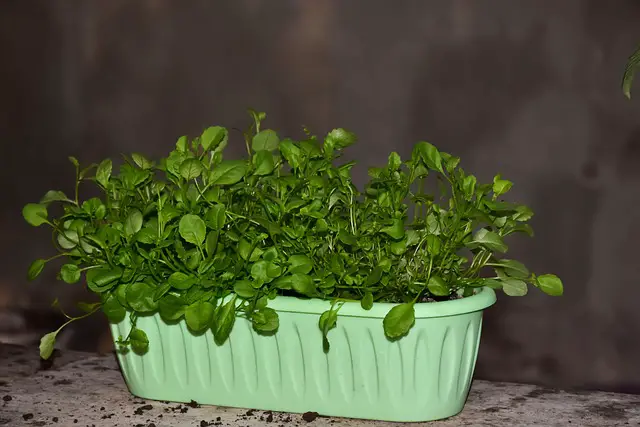
IV. Planting and Care
Step-by-step instructions for planting and caring for your herb garden.
- Choose the right herbs: When selecting herbs for indoor growing, it is important to consider the light requirements of each plant. Herbs such as parsley, basil, mint, thyme, and cilantro are well-suited for indoor growing and can thrive without direct sunlight. These herbs prefer bright, indirect light and high humidity.
- Prepare your space: To ensure the success of your indoor herb garden, it is important to provide the proper environment. A south-facing windowsill or a tabletop works well, or you can use indoor herb garden planters. If you don’t have access to natural sunlight, you can use a grow light to supplement the light requirements of your herbs.
- Fill your container with a good quality, well-draining potting mix. A well-draining potting mix will help to prevent waterlogging and promote healthy root growth.
- Water your herbs well before planting, and then plant your seeds or seedlings. Be sure to space them out according to their mature size, so they won’t get overcrowded.
- Water your herbs regularly, keeping the soil consistently moist but not waterlogged. Indoor herbs require more frequent watering than outdoor herbs due to the dry air in most homes. It is important to monitor the moisture level of the soil and adjust watering accordingly.
- Provide your herbs with proper lighting. A grow light can be used to supplement the light requirements of your herbs if you don’t have access to natural sunlight.
- Fertilize your herbs with a balanced liquid fertilizer every 2-3 weeks. Indoor herbs generally have a higher fertilizer requirement than outdoor herbs due to the lack of natural nutrients in the soil.
- Pinch off the tips of your herbs to promote bushiness and encourage new growth. This technique is called pinching or pruning and it stimulates the plant to produce more branches, resulting in a bushier plant.
- Keep an eye out for pests, and address them immediately if you notice any. Common indoor herb pests include spider mites, whiteflies, and mealybugs.
- Harvest your herbs regularly to encourage new growth and prevent them from going to seed. Herbs can be harvested as needed, but it’s best to harvest regularly to keep the plant producing new growth and leaves.
By following these detailed instructions and considering the specific needs of each herb, you will be able to successfully grow an indoor herb garden and enjoy fresh herbs year-round.
Tips for maintaining healthy growth and preventing common problems
Maintaining healthy growth and preventing common problems in indoor herb gardens require careful planning and attention. Before starting an indoor herb garden, one should consider the space available, sunlight levels, and soil type as these factors will determine what herbs can be grown indoors.
Additionally, it is important to provide the proper amount of water and fertilizer to ensure that plants do not become stressed or develop root rot. Pruning regularly helps to keep the plants growing healthy and encourages new growth.
Lastly, checking for pests regularly helps stop infestations before they become a problem. Taking the time to plan ahead and staying consistent with maintenance tasks can help ensure success when creating an indoor herb garden.
How to have a herb garden indoors?
Having a herb garden indoors is an easy and fun way to grow your favorite herbs year-round. There are a few things to consider when starting an indoor herb garden, such as the type of potting soil that works best, which herbs prefer full or indirect sunlight, and how often watering needs to occur.
With the right supplies and some knowledge, you can have fresh herbs available whenever you need them! When it comes to picking out containers for your indoor herb garden, choose ones with good drainage holes at the bottom.
Ensure that they are also large enough for your plants so they can comfortably spread their roots without overcrowding each other. If desired, use color-coordinated buckets for different types of herbs – this will make keeping track of them easier.
To make sure that your herbs thrive, select a high-quality organic potting soil meant specifically for potted plants. Make sure the soil has plenty of nutrients in it – either add fertilizer before planting, or look for soils with added fertilizer already mixed into them.
Then fill each pot about three quarters full of soil and pack down lightly. When planting your seeds or seedlings, read the instructions carefully on how deep and far apart each should be planted, as this varies according to species.
After planting, gently water each one until there’s standing water at the base of the pots; this helps settle in all the air pockets within the soil. Herbs generally like to get at least six hours of bright but indirect sunlight per day – so place near windows if possible; however, some do just fine in lower light conditions too.
Finally, make sure you water regularly; check soil moisture weekly by poking your finger into it – if it’s damp then no more water is needed but if dry then give each plant a good soak until water drains from its bottom hole(s). As long as these instructions are followed correctly you should have delicious homegrown herbs throughout every season!
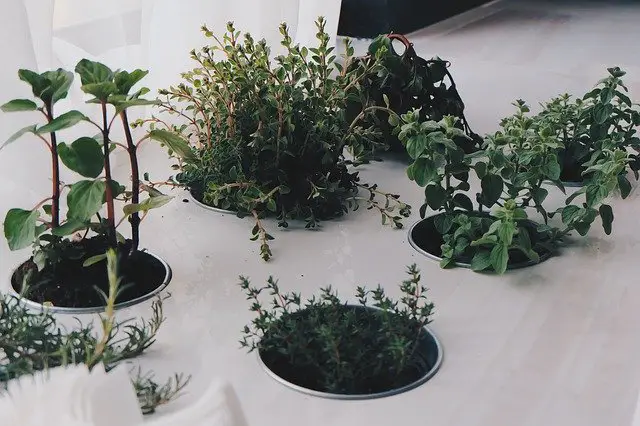
V. Harvesting and Using Your Herbs
How and when to harvest your herbs?
Harvesting your herbs is an important step in the growing process, as it ensures that they are at their peak of flavor and aroma. When harvesting your herbs, the best time to do so is in the morning, when the oils and aromas of the herb plants are strongest.
To harvest properly, wait until flowers appear on the plant and then use scissors or your fingers to snip off a few sprigs of leaves (if using scissors, make sure to cut above a leaf node).
Once you have harvested your herbs, it’s important to dry them quickly by spreading them out on a paper towel or screen placed in a warm spot away from direct sunlight. Once dry, store them in airtight containers for later use.
Ideas for using your fresh herbs in cooking and home remedies
Using your fresh herbs in cooking and home remedies is a great way to get the most out of your herb garden. Herbs can be used to flavor dishes, add nutritional benefits to meals, and even create healing mixtures for colds, headaches, and more.
One idea for using your fresh herbs is making homemade pestos or sauces with basil, oregano, cilantro, parsley, garlic, and any other herbs you’d like. You could also make herbal teas by steeping fresh herbs such as chamomile or lavender for a calming beverage.
Other ideas include drying herbs for future use in soups or stews, adding mint sprigs to cocktails and lemonades for a refreshing twist, creating herbal soaps from rosemary and thyme, infusing oils with sage or oregano for dipping breads into or salads dressings, or making syrups with cinnamon or ginger to sweeten up ice cream sundaes. The possibilities are endless when it comes to utilizing the fruits of your labor!
VI. Conclusion
With the right knowledge and a few simple steps, anyone can easily create a beautiful indoor herb garden that can provide fresh, flavorful herbs all year long. By choosing suitable plants, providing proper lighting, and ensuring consistent irrigation and airflow conditions, you can enjoy an abundance of homegrown herbal ingredients. With the tips in this guide, you should be well on your way to having a flourishing indoor herb garden in no time!
Tools for an Indoor Herb Garden
For your indoor garden, you will need a few tools. Some tools you should purchase are a trowel and watering can. A spray bottle can be helpful for misting.
For the people who are starting with seeds. Purchasing a seed starter kit is very helpful.
The soil that I use for all my herb gardening, is the Professional Grower Mix Soil. I find them to be one of the best and I have had nothing but good success with this soil.
For people with minimal space, use the Saratoga Home Herb Pots with Tray Set.
For apartments with very little sunlight, I would recommend the Mindful Design LED Indoor Herb Garden.
I currently use LA JOLIE MUSE Flower Pot Garden Planters for my herbs. These pots are very nice quality, and can be used for indoor and durable enough for outdoor use.
The indoor grow lights that I have personally used, and would recommend are:
Make sure you check the light requirements for each plant. Getting a timer, is an easy way to control the amount of lighting that is needed. These lights are available on Amazon.
Tips for Growing an Indoor Herb Garden
- Grow herbs in separate planters or pots
- Make sure to check the requirements for each herb
- Keep the climate indoors between 65 and 75 degrees Fahrenheit
- If the plants outgrow their planter, transfer it to a bigger one. You will notice the roots starting to bulge out of the planters or pots.
- Plant herbs in separate planters to avoid one herb dominating the other
- If you do have the room to handle more than one plant in each planter, make sure and research that they make good companions.
- Make sure the soil used has good drainage
- Do not overwater your plants. Once a day is good. A soil moisture meter makes this easy. Get it on Amazon.
- Pick an area with at least 4 to 6 hours of sunlight
- Select pots or planters at least 6 inches in diameter
- How to Harvest Herbs
- When harvesting annuals make sure to remove only healthy leaves. You can do this either by cutting them or by pinching them off with scissors or a knife. Trim leafy annual herbs so they can regrow quicker. Remove the leaves from the top of the plants.
- Perennial herbs are a bit different, and it is better to harvest this plant 1/4 at a time. It’s also best to cut the leaves front the top of the plants
Using full spectrum grow lights is very good to use if lighting is minimal. Keep them about a foot away from your herb plants and running for 12 to 16 hours depending on the plant.
For people living in limited spaces such as an apartment using a hanging planter to grow your herbs is a great way. There are many planters available on the market.
Some planters you can take a look at are indoor garden planters, and vertical planters. I would also suggest looking at self watering planters, they tend to make life much easier, and with our busy lifestyles there will be times you will forget to water your plants, so adding this is definitely a lifesaver. You can purchase these products on Amazon.
If you’re one that would like to take their herb gardening to the next level, then I would recommend the Aero Garden Bounty. This indoor Hydroponic herb garden allows you to grow up to 9 plants at once. Read the review here.
Simply following the instructions provided can help you dramatically improve your success of growing your own herbs. Give your plants some time to grow, and it won’t be long before you start to enjoy them in dishes and sauces.
Related Post: 9 Best Tested Indoor Herb Garden Starter Kits (2022)


